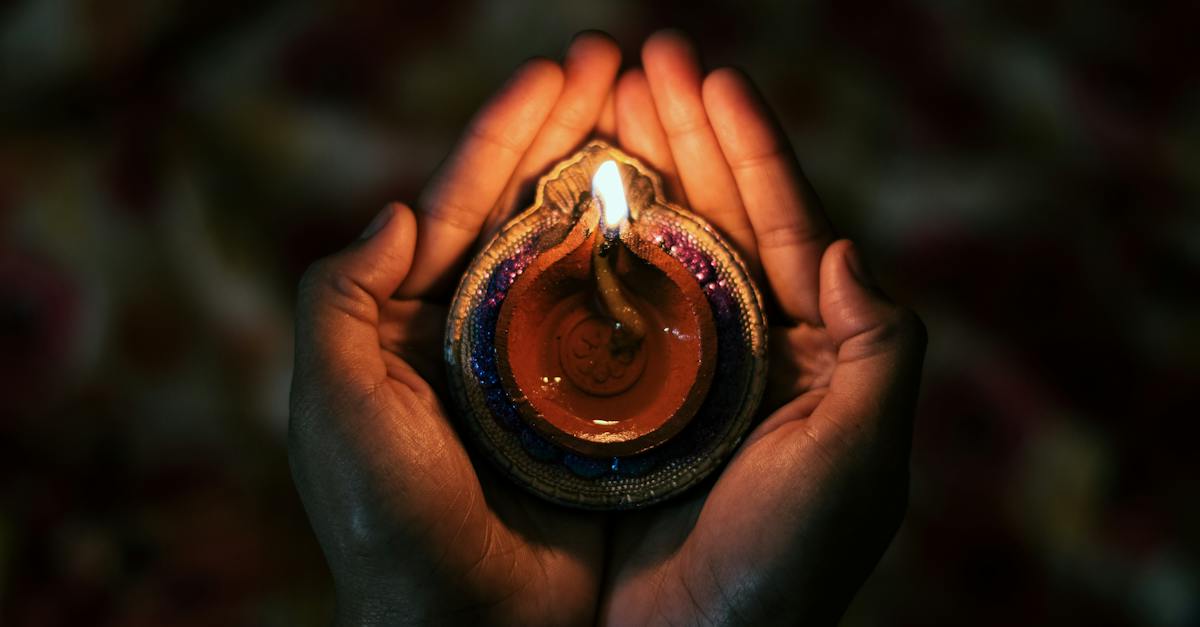This site contains affiliate links to products. I may receive a commission for purchases made through these links.
There’s something truly magical about gazing up at the night sky and witnessing a rare celestial event. It’s a reminder of our place in the cosmos, a spectacle that leaves us in awe. Whether it’s a meteor shower, a solar eclipse, or the passing of a comet, these events are a must-see for any skywatcher.
But how do you prepare for these celestial happenings? It’s not as simple as just looking up. You’ll need the right equipment, a little bit of knowledge, and a dash of patience. In this article, I’ll guide you through the process, ensuring you’re ready for the next big event in the night sky. So, let’s dive right in and start preparing for the wonders the universe has to offer.
Understanding Rare Celestial Events
Delving deeper into rare celestial events, let’s unfold the mysteries that the cosmos has to offer. Celestial events such as meteor showers, solar eclipses, and the appearance of comets are no less than a spectacle. Seeing these events firsthand isn’t just about being in the right place at the right time. What’s essential is understanding what these events are and how they occur.
Meteor Showers
Meteor showers are stellar light shows caused by the earth’s atmosphere colliding with debris from comets or asteroids. Some of the most well-known meteor showers include the Perseids in August and the Geminids in December. I’ll share an interesting fact: all meteors within the same shower appear to come from a common point in the sky. This phenomenon is called the radiant, where the shower gets its name.
Solar Eclipses
In contrast, a solar eclipse happens when the moon aligns between the Sun and the Earth, casting a shadow over parts of the Earth. We have two to five solar eclipses each year, but total eclipses – where the Sun’s entirety is blocked – occur roughly every 18 months. They’re an astronomical wonder that many travel across the world to witness.
Comets
Comets are icy bodies that originate from the outermost regions of our solar system. As a comet gets close to the Sun, it heats up and produces a glowing coma or envelope around it, followed by a tail which always points away from the Sun due to solar wind. Hale-Bopp and Halley’s comet are two of the most famous ones.
Remember, each celestial event is a unique blend of science, art, and nature. Hence proper preparation is paramount to enjoy, appreciate, and learn from these universal extravaganzas. Engage in my upcoming sections where I’ll provide insights on how to prepare for and capture these magnificent occurrences successfully. Let’s get ready to delve deep into the cosmic realm, and let’s embrace the beauty of these fascinating celestial phenomena.
Types of Rare Celestial Events
We’ve touched base on some general types of celestial events, now let’s delve a bit deeper into the specific types of these unique occurrences that keep us gazing up at the sky.
Meteor showers simply put, are sparks flying across the celestial sphere. When our planet passes through the scattered leftovers of comets or sometimes asteroids, we bear witness to this astronomical light show. However, it’s not as spontaneous as it seems. In fact, most meteor showers occur annually and can be predicted. They generally last for several days and are best observed in pre-dawn hours.
Moving on to solar eclipses, they are a phenomenon when our Moon creates a lineup with the Sun and Earth, casting a shadow and causing an eclipse. Surprisingly, solar eclipses aren’t as rare as you might think. They happen at least twice a year. However, the total solar eclipses, where the Sun is completely blocked, are a rare treat indeed, occurring only approximately every 18 months.
Last but not least, we have comets. Also known as cosmic snowballs, comets are icy celestial bodies that dash around our solar system and as they get closer to the Sun, they heat up and start to release gases, producing a glowing head and often a tail. But what makes them rare is that while there are believed to be billions of comets in our solar system, very few are big and close enough to Earth to be visible to the naked eye.
Let’s get to the heart of it though. It’s all about how you experience these celestial events. You’ll want to ensure your observation of these rare celestial shows is optimal, necessitating a bit of preparation. So, let’s shift our focus to how to gear up for these extraordinary occurrences.
Importance of Preparing for Rare Celestial Events
There’s a lot that goes into observing these rare celestial events, trust me, I know from experience. Preparation is key and can be the difference between having an okay time and having a truly fascinating time. It’s a chance to engage with the cosmos and glean a little nugget of its infinite wisdom. But why is it so important to prepare for these events?
For starters, preparation increases understanding. Understanding is essential to fully appreciate rare celestial phenomena like meteor showers, solar eclipses, and comets. I would suggest researching the event beforehand, understanding the science behind it, and maybe even learning a little about its history. This will enhance your overall experience.
Next up is planning. Believe me, celestial events won’t wait for anyone. If you don’t plan ahead, you could miss out. For example, meteor showers occur annually and are predictable. In fact, it’s known when certain meteor showers like the Perseids or Geminids will peak. Here’s a little table I whipped up:
| Meteor Shower | Peak Night |
|---|---|
| Perseids | August 12-13 |
| Geminids | December 13-14 |
Similarly, solar eclipses happen at least twice a year. But total solar eclipses? Those are a rarity and to truly synchronize your timing with the cosmos, you’d better have a plan.
Lastly, we need to discuss equipment. Most celestial events can be viewed just with the naked eye, but some, especially those like comets might require a simple set of binoculars or telescope for an up-close view. Make sure you have the right gear ready for your observation.
So there isn’t just one reason to prepare for rare celestial events. There’s a whole suite of reasons: understanding, planning, the right equipment, and a bucket load of enthusiasm. Trust me, your efforts won’t be wasted, and you’re bound to walk away with an experience that’s pure magic.
Researching Upcoming Celestial Events
Complete preparation for celestial events begins with proper research. One needs to understand the events in their entirety before witnessing them. I’ve found that researching upcoming celestial events not only gears up my anticipation but also enhances the entire experience.
I like to start my research by gathering as much information as possible about the event. It’s important to find out the date and time of the occurrence, the best locations to view it from, and whether any special equipment will be required. For instance, while meteor showers can be viewed with the naked eye, solar eclipses may require specially designed glasses or filters.
In my experience, consulting celestial calendars readily available online can provide this necessary information. They often include information about celestial objects’ visibility, movements, and magnitudes. Astronomical almanacs are also useful – filled with detailed charts and maps – perfect for those inclined towards in-depth research.
Up next, understanding the science behind these events holds high significance. Knowing how and why such phenomena occur in the cosmos not only increases my appreciation but also deepens my understanding. I usually dedicate some time reading popular science books or articles, watching documentaries, and even engaging in online forums where discussions about these events are taking place.
Then, I dig into the history of the event to know if it had any significant impact in the past. Many celestial occurrences were recorded by our ancestors, providing fascinating insights about their civilizations and cultures. For example, the sighting of Halley’s Comet every 76 years has been documented since ancient times and is often linked to pivotal peroids in human history.
Getting my hands on the right equipment is the final step. Remember, it’s not about having the most expensive telescope, but the right one. The specifications and performance of the equipment should exactly match the requirements of the event you’re planning to observe. It’s worth spending time investigating what might be needed and comparing products and prices.
Altogether, these steps ensure a comprehensive understanding of the event and a more fulfilling viewing experience. Indeed, the journey of preparation is as captivating as the celestial event itself. Now that you’re armed with the methodology for researching these events, it’s equally important to discuss the next phase of preparation – planning for the event. Let’s move forward and delve into that further.
Gathering the Right Equipment
While it’s thrilling to look forward to witnessing a celestial event, there’s one crucial factor that can’t be overlooked: having the right equipment. Proper preparation isn’t simply about knowing when and where the event happens. It’s also about ensuring you’re equipped with the necessary tools to make the most of your star-gazing session.
Let’s take a look at some key equipment you’ll need.
Essential Gear
From the basics like a good-quality telescope or binoculars to extra accessories like camera equipment, here’s a short guide to what the well-equipped star-gazer should consider.
- Telescope or binoculars: These are a must for anyone interested in observing celestial events. Choose based on your budget and needs. Remember a well-maintained, middle-grade telescope often outperforms a poorly kept high-end one.
- Star Charts or Astronomy Apps: Useful for identifying constellations and celestial bodies. Opt for a chart or app that suits your experience level.
- Camera Equipment: If you plan to capture the event, a digital camera with manual mode, a tripod, and a remote shutter release will come in handy.
- Seating & Warm Clothes: Comfortable seating and warm clothes are often overlooked. Don’t let discomfort ruin your experience.
Importance of Calibration
Once you have your gear, it’s important to know how to calibrate and use it correctly. For example, telescopes and cameras require precise adjustments for optimal viewing and capturing. I recommend getting familiar with your equipment long before the celestial event, so you’re not fumbling at the last minute.
To sum it up, proper equipment preparation is half the battle won when it comes to celestial event watching. By ensuring that you have everything you need (and know how to use it), you’re setting yourself up to have a truly magnificent stargazing experience. This guide merely touches the surface of myriad possibilities for celestial observation. I urge you to dig deeper based on your interests and preferences. Prepare adequately and may your night sky viewing be a memorable one.
Tips for Observing Rare Celestial Events
When it comes to observing celestial events, meticulous planning and preparation is the golden rule. It’s not just about the event itself, it’s about ensuring a meaningful and memorable experience. Let’s delve into more guidance and tips.
One vital aspect to consider is choosing the right observation spot. Light pollution can significantly hinder your viewing capabilities. It’s best to head to a location away from the city lights, preferably a dedicated dark sky site. A secluded rural area or national park would do the trick.
Weather conditions and timing play a crucial role too. It’s important to track local weather forecasts and plan your viewing during an optimal weather window. The perfect combination would be a clear, cloudless night at the exact time of the event. If you’re planning to capture the event, the right weather conditions would greatly help in taking high-quality images.
Aside from these key aspects, being flexible and patient will also go a long way. Rare celestial events don’t happen every day, and there might be delays or changes. Keep a flexible schedule, and be ready for long waits during the events. It’s also recommended to bring along warm clothing, snacks, and hydration.
Finally, don’t forget the element of safety while observing. Ensure you follow all guidelines and rules for the location you’re in. Also, protect your eyesight by using eye protection gear when observing solar events.
Capturing Rare Celestial Events with Photography
Having equipped ourselves with the knowledge of choosing the perfect observation spot and keeping track of weather conditions, let’s delve into another aspect of this exciting journey—learning how to capture these magical moments for posterity using photography. With the right kind of equipment and a little bit of guidance, you too can freeze these beautiful moments forever.
Having the Right Equipment
First things first, the camera you select plays an instrumental role. A good quality DSLR would be your best bet because of its manual control options. It’s important, too, that your camera supports long exposures. Remember, astro-photography is all about capturing as much light as possible, and a long exposure can help achieve that.
The lens you choose also matters greatly. A fast, wide-angle lens would be ideal as it can capture a larger portion of the sky and will allow more light to hit the sensor.
Additionally, a sturdy tripod is crucial for keeping your equipment stable during a long exposure. Other must-have accessories include cable release (to minimize camera shake) and extra camera batteries (cold weather decreases battery life).
Setting Up Your Camera
Now that you are equipped, let’s talk about setting up your camera. Start by setting the focus to infinity. This may require testing with your specific lens, as not all lenses focus at infinity at the same point.
Setting the exposure time is vital. Too long an exposure can lead to star trails, which are beautiful unto themselves but may not be what you are aiming for. Use the rule of “500”: divide 500 by the focal length of your lens (in mm) to determine the maximum exposure time (in seconds) before stars start to trail.
As for the aperture, generally, you want your aperture to be as wide as possible, typically f/2.8 or wider. This helps gather as much light as you can.
Lastly, check on and set your ISO. This tends to be a bit of trial-and-error depending on your camera’s noise levels. A range of ISO 1600 to 3200 usually works well, but you’ll have to experiment to see what works best for your camera.
Staying Safe During Celestial Events
We’ve discussed how to capture the astounding beauty of rare celestial events. Now let’s focus on a crucial factor often overlooked – safety during these events. This section aims to walk you through the safety measures paramount during celestial observations.
One of the primary types of celestial events where safety is a significant concern is solar eclipses. Directly looking at the Sun during an eclipse can cause severe and permanent eye damage known as solar retinopathy. Ensure you have proper solar viewing or eclipse glasses that meet the ISO 12312-2 international safety standard.
To create a clearer picture, let’s break down the safety gear needed:
- Solar viewing or eclipse glasses
- Welder’s glasses rated 14 or higher
- Telescopes or binoculars fitted with solar filters specially designed for sun viewing
Remember that regular sunglasses, smoked glass, polarizing filters, or any other makeshift solutions aren’t safe. They can disrupt visual observation and lead to severe visual impairment.
You should also prepare for the effects of prolonged outdoor activity. If you are planning on camping out to see an overnight celestial event or long daytime outdoor sessions, it’s important to keep the following in mind:
- Dress appropriately: Weather can change rapidly, so wearing layers and water-proof clothing is a smart move.
- Stay hydrated: Especially in hot weather, bring enough water and snacks.
- Protect against insects and sunburn: Don’t forget your sunscreen and bug spray.
Stargazing for celestial events is both exciting and enriching. It can, however, pose potential health risks without proper precautions. Being prepared with correct viewing equipment and outdoor essentials is not just part of the process – it’s the surest way of guaranteeing a memorable experience. The sky splendors deserve our attention for sure, but as the saying goes, Safety First.
With these key points, you’re better equipped to enjoy rare celestial events safely. We’ll be diving into more details on specific events and best practices for each in upcoming sections.
Conclusion
I’ve shared how to gear up for rare celestial events and the importance of safety. Remember, having the right equipment, especially for photography, can make all the difference. But don’t forget about personal safety. Proper viewing glasses, hydration, and sunburn protection are just as crucial. It’s about being prepared, so you’re not caught off guard when the sky puts on its show. So, get your gear ready, stay safe, and enjoy the spectacle. You’re in for a truly unforgettable experience.
What is the focus of the article?
The article provides guidance and tips on observing and photographing rare celestial events. It emphasizes the importance of suitable equipment and offers recommendations on camera settings.
What are the safety measures recommended for observing celestial events?
The article suggests using proper solar viewing or eclipse glasses during solar eclipses. It also highlights the importance of dressing appropriately, staying hydrated, and protecting against insects and sunburn during extended outdoor activity.
Why is preparedness emphasized in the article?
The article cautions about the potential hazards or inconveniences that could occur during prolonged outdoor activities for celestial observation. Being prepared guarantees a safe and memorable experience while minimizing potential issues.
What equipment is recommended for photographing celestial events?
Aside from appropriate protective wear, the article suggests using a camera with the right settings. However, it does not provide specific camera models or brands.
What other advice is given for a successful celestial event observation?
Besides safety and equipment, the article also advises enthusiasts to stay hydrated, dress comfortably, and formulate a plan for potential insect bites or sunburn. These measures ensure a smoother observation experience.




